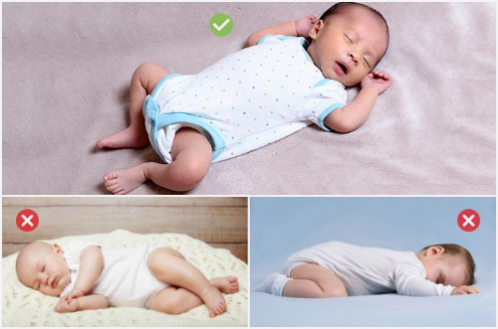Safe Sleep in Child Care
 The Department of Social Services seeks to connect both families and their licensed care providers with educational resource links and information to encourage safe sleeping environments for all infants both at home and in child care settings.
The Department of Social Services seeks to connect both families and their licensed care providers with educational resource links and information to encourage safe sleeping environments for all infants both at home and in child care settings.
The Department of Social Services Child Care Licensing Program has been working to strengthen regulations around safe sleep. The requirements are consistent with the American Academy of Pediatrics safe sleep guidelines, and we hope they will improve environments that could otherwise put infants at undue risk.
Safe Sleep Regulations
Individual Infant Sleeping Plan LIC 9227 (Español | 한국어 | 中文 | Tiếng Việt)
Informational Videos on Safe Sleep!
Please visit the links below from the Eunice Kennedy Shriver National Institute of Child Health and Human Development to learn more about Safe Sleep.
Typically, infant deaths are categorized as either a Sudden Unexpected Infant Death (SUID) or Sudden Infant Death Syndrome (SIDS). Sadly, in the last five years, in California, there have been 46 sleep related deaths in licensed facilities. According to the American Academy of Pediatrics (AAP), more than 3,500 babies in the U.S. die suddenly and unexpectedly every year while sleeping, often due to SIDS. In our continued efforts to reduce these deaths, the Department of Social Services, Child Care Licensing Program has strengthened our licensed care provider regulations around safe sleep environments. In addition to requirements, this resource page has been created to share best practices that everyone may use to help prevent SUID and SIDS.
Sudden Unexpected Infant Death (SUID), is the death of an infant younger than 1 year of age that occurs suddenly and unexpectedly. After a full investigation, these deaths may be diagnosed as suffocation, entrapment, infection, metabolic disease, cardiac arrhythmia, trauma or SIDS.
Sudden Infant Death Syndrome (SIDS), is the sudden death of an infant younger than 1 year of age that remains unexplained after a thorough investigation.
Can anything be done to help reduce the risk of SIDS, suffocation and strangulation?
While SIDS cannot be prevented or predicted, there are a number of ways that parents and child care providers can help to reduce the risk of sleep-related infant deaths.
Anatomy of a Baby: Sleeping on Back Vs. Stomach
According to the Eunice Kennedy Shriver National Institute of Child Health and Human Development Safe to Sleep Public Education Campaign:
"Back sleeping does not increase the risk of choking. In fact, babies may be better able to clear fluids when they are on their backs, possibly because of anatomy. When a baby is in the back sleeping position, the trachea lies on top of the esophagus. Anything regurgitated or refluxed from the esophagus must work against gravity to be aspirated into the trachea. When a baby is in the stomach sleeping position, anything regurgitated or refluxed will pool at the opening of the trachea, making it easier for the baby to aspirate or choke."
According to the AAP, many infant deaths occur when babies who are used to sleeping on their backs are placed to sleep on their tummies by a different caregiver. Babies who experience this “unaccustomed tummy sleeping” are 18 times more likely to die from SIDS.

Check for Recalled Infant Equipment
Please visit the Consumer Product Safety Commission website to check for recalled items and read the Provider Information Notices regarding recalled infant equipment.
Safe Sleep Quiz
How Safe Sleep Savvy Are You?
You can watch a short interactive video quiz to see how much you know about the safe sleep environment at the National Institute for Children's Health Quality website.